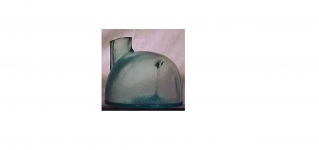Dug
Bronze Member
- Feb 18, 2013
- 1,138
- 1,264
- Detector(s) used
- XP Deus/Sovereign GT.
- Primary Interest:
- Relic Hunting
I recently acquired an early 1900s local pharmacist bottle. It had some minor sickness so prior to tumbling it I cleaned it and looked it over for pot stones or near surface bubbles. The letter T on the embossing caught my eye and I was trying to figure out if it was a potstone but when I looked closer I saw a long spur of glass on the interior of the bottle on the backside of the letter. This is a first for me so I thought I would share. No clue what could have caused this anomaly during the production.
Seems like a good way for a customer to ingest a piece of glass if they shook the bottle up too much before consuming.


Seems like a good way for a customer to ingest a piece of glass if they shook the bottle up too much before consuming.





